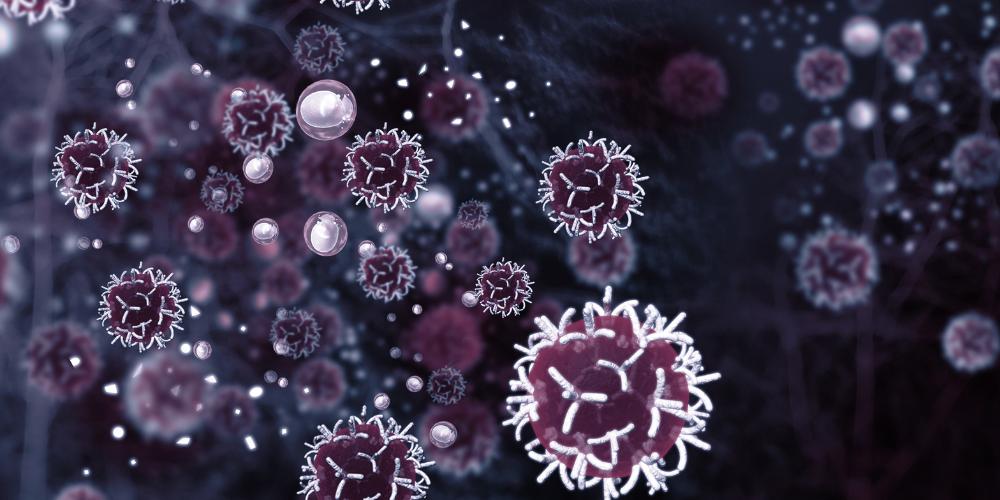Practical Considerations of Response Assessment in Neuro-Oncology 2.0 for Clinical Trials
Response Assessment in Neuro-Oncology (RANO) 2.0 improves upon current response assessments and implements a standard set of imaging read criteria for both high- and low-grade gliomas (HGG and LGG).

RANO 2.0 addresses the concern of immunotherapy treatment-related increases in contrast enhancement or decreases in contrast enhancement, by including the concepts of Pseudoprogression (PsP) and Pseudoresponse (PsR), requiring repeat imaging for confirming disease response, and disease progression.
Dr Constance Moore, Principal Medical Research Scientist, Voiant, spoke with Dr Benjamin Ellingson, University of California Los Angeles, about how to use RANO 2.0 in clinical trials.
Lesion Selection
If the review paradigm is enhancing disease, and all baseline lesions must be enhancing, should readers mark any new non-enhancing lesions, and would those contribute to the sum of the product of perpendicular diameters (PPD) or volume?
If it is a purely “HGG” study, then only the enhancing disease is taken into consideration. There is no need to measure any of the non-enhancing lesions, nor add any of the non-enhancing lesions to the sum of PPD or volumes.
Disease Progression
Will progressive disease (PD) trigger if a new measurable enhancing lesion is marked, If the review paradigm is non-enhancing disease, and all baseline lesions must be non-enhancing?
Any new enhancing lesion on an LGG study is PD. This should be treated similarly to how PD is triggered for “neurological decline” (for example). The emergence of measurable enhancement basically trumps the growth of the non-enhancing tumor. This is a binary “PD” automatically when it is observed. It doesn’t get added to the sum of PPD.
What would the radiographic time point response be if the previous time point was PD and current time point is not PD?
Assuming the trial is for HGG, and confirmation of PD is required by the sponsor/study, then the preliminary PD time point is technically “pseudoprogression (PsP)” and the current time point would be stable disease (SD).
Confirmation of Response
What would the radiographic time point response be if the previous time point is response but current is SD?
If the response is not confirmed, then it is downgraded to SD (a non-durable response).
Can you comment on the preliminary/confirmed minor response (MR) not being part of the RANO 2.0 table?
None of the criteria that involve non-enhancing disease ever gets a confirmation. The use of confirmation scans is only for enhancing disease and only for HGG cases. There is no confirmation of progression with non-enhancing disease.
Modified RANO2 has the caveat that the best response after pseudoprogression is SD. Does the same apply to RANO 2.0 and how is this accounted for in the response table since we do not have an actual response of pseudo progression?
This is changed in RANO 2.0 and a response after pseudoprogression is allowed. Note there must be shrinkage relative to the baseline, not the preliminary PD timepoint.
Imaging and Clinical Data Integration
Why does the RANO 2.0 integrated response1 only have the pair “Steroid Dose” = “Yes” and “Increased Steroid Use” = “Yes”, and not the pair “Steroid Dose” = “Yes” and “Increased Steroid Use” = “No”?
The “change in steroids” is purposefully separated out from the “steroids at all” question because there cannot be a complete response (CR), for example, if there are any steroids being administered. The “change in steroids” information is important because response may need to be downgraded/adjusted based on whether steroids changed.
What if “Steroid Dose” = “Yes” but steroid use is stable or decreased?
If “Steroid Dose” = “Yes”, but steroid use is stable or decreased, there cannot be CR, but there be a partial response (PR) as best response. In general, if steroid doses are “stable”, allowable responses are Progressive Disease (PD), Stable Disease (SD), Minor Response (MR), and Partial Response (PR). You cannot have a Complete Response.
If the steroid dose increases significantly, then the patient can only have PD or SD. Any PR or CR gets downgraded to SD because steroids can cause the tumor to shrink. If steroids have decreased significantly, then the patient (in theory) can only have SD, MR, or PR (assuming they didn’t decrease to zero, otherwise CR is also allowed). The thought is that by decreasing steroids, the opposite effect can occur, and any increase in size of the tumor could possibly be attributed to change in steroids and not to the investigational therapy.
Referenced:
1: RANO 2.0: Update to the Response Assessment in Neuro-Oncology Criteria for High- and Low-Grade Gliomas in Adults. J Clin Oncol (2023) 41:5187-5199
2: Modified Criteria for Radiographic Response Assessment in Glioblastoma Clinical Trials. Neurotherapeutics (2017) 14: 307–320.












